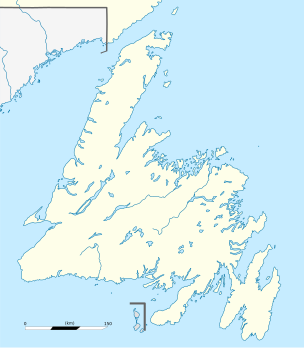SS Empire Energy
| History | |
|---|---|
| Name |
|
| Owner |
|
| Operator |
|
| Port of registry | |
| Builder | Neptun AG |
| Launched | 1923 |
| Completed | July 1923 |
| Out of service | 5 November 1941 |
| Identification | |
| Fate | Wrecked |
| General characteristics | |
| Type | Cargo ship |
| Tonnage | |
| Length | 440 ft 0 in (134.11 m) |
| Beam | 57 ft 1 in (17.40 m) |
| Draught | 25 ft 9.25 in (7.85 m) |
| Depth | 29 ft 9 in (9.07 m) |
| Installed power | 720 nhp |
| Propulsion | Triple-expansion steam engine, low-pressure steam turbine, double-reduction geared driving a single screw propeller |
| Speed | 11 knots (20 km/h) |
Empire Energy was a 6,548 GRT cargo ship that was built in 1923 as Grete by Neptun AG, Rostock, Germany. She was sold to an Italian firm in 1932 and renamed Gabbiano. She was seized by the United Kingdom in 1940, passed to the Ministry of War Transport (MoWT) and renamed Empire Energy. She served until 5 November 1941, when she ran aground off Cape Norman, Newfoundland, and was wrecked.

Description
The ship was built in 1923 by Neptun AG, Rostock.[1]
The ship was 440 feet 0 inches (134.11 m) long, with a beam of 57 feet 1 inch (17.40 m). She had a depth of 29 feet 9 inches (9.07 m),[2] and a draught of 25 feet 9.25 inches (7.85 m).[3] She was assessed at 6,570 GRT, 4,005 NRT.[2]
The ship was propelled by a 720
History
Grete was launched in 1923, she was completed in July that year. She was built for C Mohlenberg Reederei
On 10 June 1940, Gabbiano was in port at Liverpool, Lancashire, when Italy declared war against the United Kingdom.[1] She was captured by crew from HMS Glasgow, which was then under repair at Liverpool and berthed near Gabbiano.[6] Her captain and crew were caught off guard by the boarding party and offered no resistance. They were allowed to collect their belongings before leaving the ship and being interned as enemy aliens.[7]
The ship was seized as a
Empire Energy was a member of Convoy OB 192, which departed from Liverpool on 31 July 1940 and dispersed at 54°26′N 20°16′W / 54.433°N 20.267°W on 4 August.
Empire Energy sailed on 12 January for
Empire Energy departed on 9 September to join Convoy FN 515,
References
- ^ ISBN 1-85044-275-4.
- ^ a b c d "Lloyd's Register, Navires A Vapeur Et A Moteurs" (PDF). Plimsoll Ship Data. Retrieved 30 August 2011.
- ^ a b "Lloyd's Register, Steamers & Motorships" (PDF). Plimsoll Ship Data. Retrieved 30 August 2011.
- ^ "SS Empire Energy (+1941)". Wrecksite. Retrieved 30 August 2011.
- ^ "Lloyd's Register, Steamers & Motorships" (PDF). Plimsoll Ship Data. Retrieved 30 August 2011.
- ^ "Naval Events, June 1940, Part 2 of 4: Saturday 8th – Friday 14th". Naval History. Retrieved 30 August 2011.
- ^ "Royal Navy: HMS Glasgow". WW2 Database. BBC People's War. Retrieved 30 August 2011.
- ^ "Prize Courts". The Times. No. 48467. London. 20 June 1940. col E, p. 1.
- ^ "Convoy OB.192". Convoyweb. Retrieved 28 August 2011.
- ^ a b c d e f g h i j k "Empire Energy". Convoyweb. Retrieved 28 August 2011.
- ^ "Convoy SL.64S". Convoyweb. Retrieved 28 August 2011.
- ^ "Convoy OB.327". Convoyweb. Retrieved 28 August 2011.
- ^ "Convoy OB.336". Convoyweb. Retrieved 28 August 2011.
- ^ "Convoy HX 139". Warsailors. Retrieved 28 August 2011.
- ^ "Convoy HX.140". Convoyweb. Retrieved 28 August 2011.
- ^ "Convoy FS.566 = Convoy FS.66 / Phase 6". Convoyweb. Retrieved 28 August 2011.
- ^ "Convoy FN.515 = Convoy FN.15 / Phase 6". Convoyweb. Retrieved 28 August 2011.
- ^ "Convoy EC.72". Convoyweb. Retrieved 28 August 2011.
- ^ a b "Convoy SC 52". Warsailors. Retrieved 28 August 2011.
External links
- Colour photo of the wreck of Empire Energy in 1959
- Colour photo of the wreck of Empire Energy in 2007
- Colour photo of the wreck of Empire Energy in 2009

